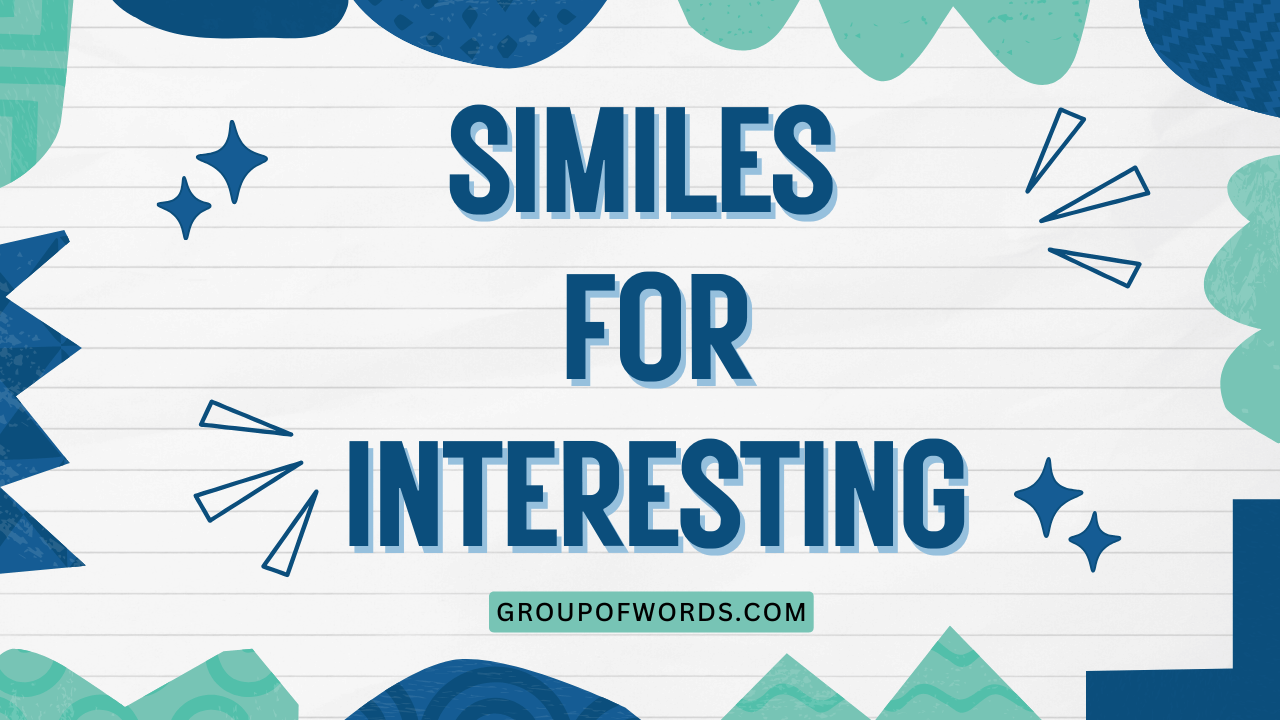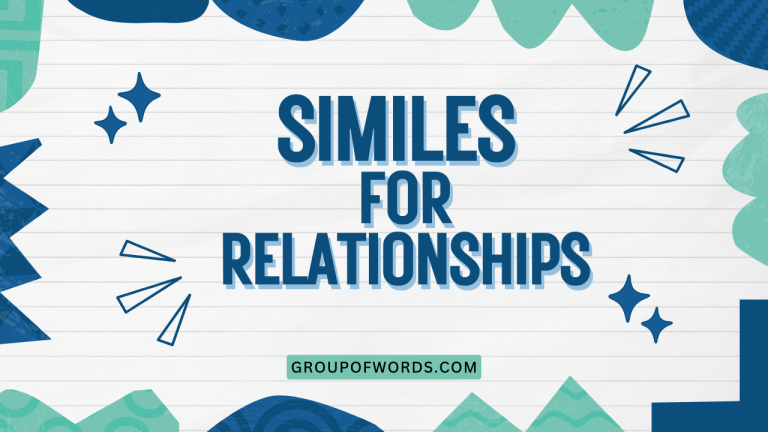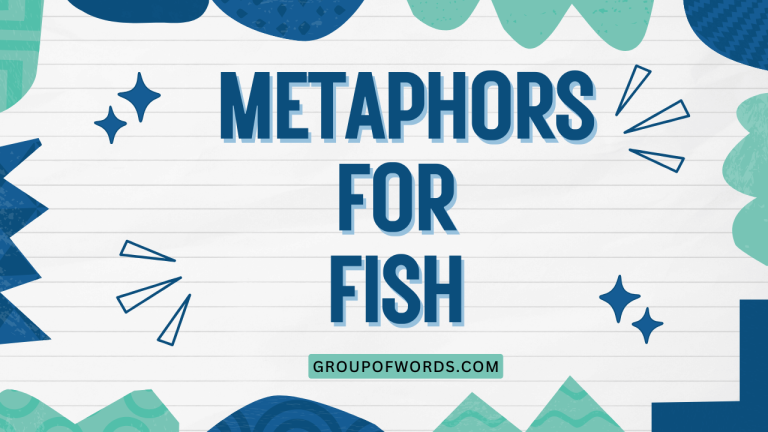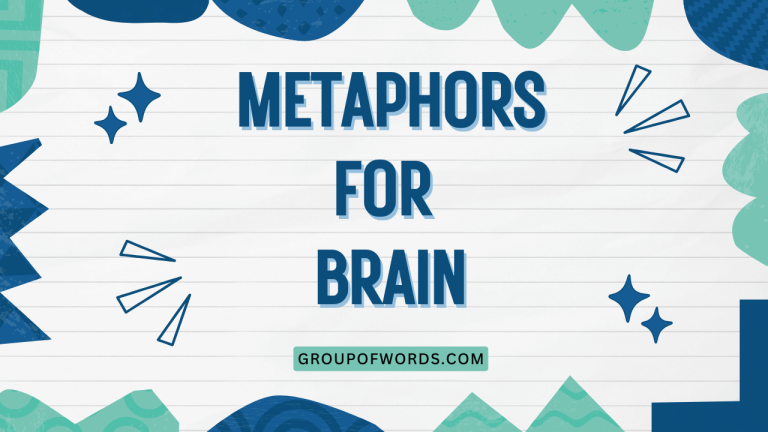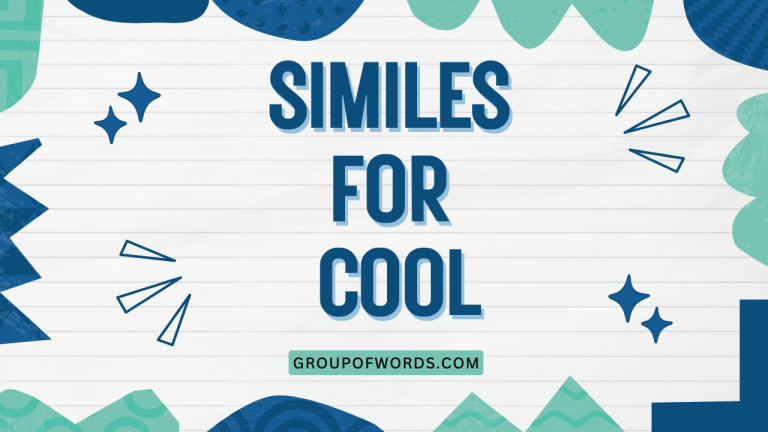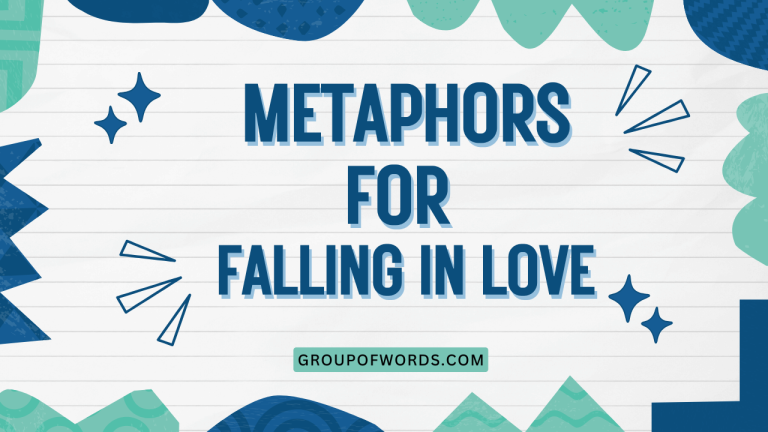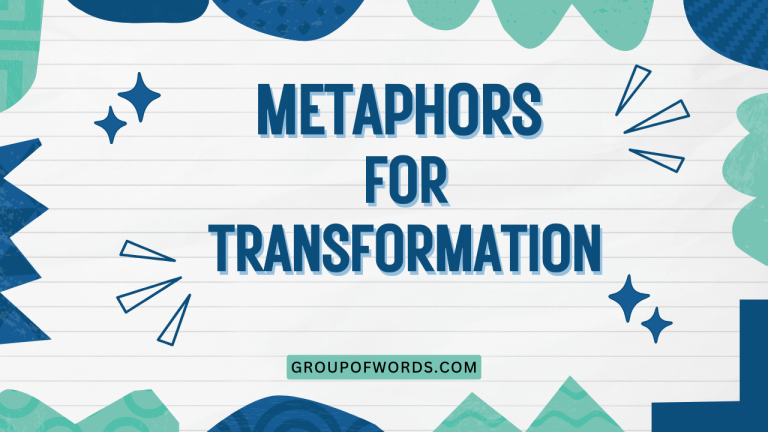Similes for “Interesting”: A Comprehensive Guide
Understanding how to use similes effectively is crucial for enriching your writing and making it more engaging. Using similes to describe something as “interesting” allows you to move beyond simple adjectives and create vivid, memorable images for your readers.
This article provides a detailed exploration of similes for “interesting,” covering their definition, structure, usage, and common mistakes. Whether you’re a student, a writer, or simply someone looking to improve their English skills, this guide will equip you with the knowledge and practice you need to master this important aspect of language.
This comprehensive guide is designed for ESL learners, writers, and anyone looking to add flair to their language. By understanding the nuances of similes, you can elevate your descriptive writing and make your communication more impactful.
Let’s dive into the world of similes and discover how to make “interesting” truly shine!
Table of Contents
- Introduction
- Definition of Simile
- Structural Breakdown of Similes
- Types of Similes
- Examples of Similes for “Interesting”
- Usage Rules for Similes
- Common Mistakes with Similes
- Practice Exercises
- Advanced Topics in Similes
- Frequently Asked Questions
- Conclusion
Definition of Simile
A simile is a figure of speech that compares two unlike things using the words “like” or “as.” It’s a tool used to make descriptions more vivid and relatable by drawing a connection between something familiar and something that might be less known or understood. Similes add depth and color to language, making it more engaging and memorable. They are a staple in both creative writing and everyday conversation.
In essence, a simile functions to illuminate a particular quality of one thing by associating it with another that shares that quality. This helps to create a clearer and often more evocative image in the reader’s or listener’s mind.
By using similes, we can transform mundane descriptions into something far more captivating.
Classification and Function
Similes fall under the broader category of figurative language, which also includes metaphors, personification, and hyperbole. Unlike metaphors, which directly equate two things (e.g., “He is a lion”), similes only suggest a similarity (e.g., “He is brave like a lion”). The primary function of a simile is to enhance description and add emotional impact. They make writing more imaginative and help to convey complex ideas in a simpler, more accessible way.
Similes can range from simple comparisons to more complex and nuanced ones. The effectiveness of a simile lies in its ability to create a strong, clear connection between the two things being compared.
The more unexpected and insightful the comparison, the more impactful the simile will be.
Contexts for Using Similes
Similes are versatile and can be used in a wide range of contexts, including:
- Creative Writing: Novels, poems, short stories, and screenplays often use similes to add depth and imagery to descriptions.
- Everyday Conversation: Similes are frequently used in casual conversation to emphasize a point or make a description more relatable.
- Academic Writing: While less common, similes can be used in academic writing to clarify complex concepts by drawing comparisons to more familiar ideas.
- Business Communication: Similes can be used to make presentations and reports more engaging and easier to understand.
The key is to use similes judiciously and ensure that they are appropriate for the context and audience. Overusing similes can make writing seem contrived, while using them effectively can significantly enhance its impact.
Structural Breakdown of Similes
The structure of a simile is relatively straightforward, typically involving two elements connected by “like” or “as.” Understanding this structure is crucial for creating effective and grammatically correct similes.
Key Elements
A simile consists of the following elements:
- The Subject: The thing being described.
- The Connecting Word: “Like” or “as.”
- The Object of Comparison: The thing the subject is being compared to.
- The Shared Quality: The characteristic that the subject and object of comparison have in common.
For example, in the simile “The movie was interesting like a good book,” “the movie” is the subject, “like” is the connecting word, “a good book” is the object of comparison, and the shared quality is the ability to hold one’s attention and provide enjoyment.
Common Structural Patterns
While the basic structure remains the same, similes can be expressed in various patterns:
- Subject + is + like + Object: “The experience was like a fascinating dream.”
- Subject + is + as + Adjective + as + Object: “The lecture was as captivating as a well-told story.”
- Subject + Verb + like + Object: “He spoke about the topic like an expert unraveling a mystery.”
These patterns provide flexibility in how you construct your similes, allowing you to tailor them to the specific context and desired effect.
Grammatical Rules
When constructing similes, it’s important to follow basic grammatical rules to ensure clarity and correctness:
- Agreement: Ensure that the subject and verb agree in number and tense.
- Clarity: Make sure the comparison is clear and easy to understand. Avoid using obscure or overly complex language.
- Relevance: The object of comparison should be relevant to the subject and share a meaningful quality.
By adhering to these rules, you can create similes that are both effective and grammatically sound.
Types of Similes
Similes can be categorized based on their complexity and the type of comparison they make. Understanding these different types can help you choose the most appropriate simile for a given situation.
Simple Similes
Simple similes are straightforward comparisons that use common objects or ideas to describe something. They are easy to understand and often used in everyday conversation.
Example: “The topic was interesting like a good mystery novel.”
Complex Similes
Complex similes involve more nuanced comparisons, often using less common objects or ideas. They require more thought and can be more impactful when used effectively.
Example: “The discussion was as interesting as watching a master painter at work, each stroke revealing a new layer of understanding.”
Extended Similes
Extended similes are longer and more detailed comparisons that develop the connection between the subject and object of comparison over multiple clauses or sentences. They allow for a more thorough exploration of the shared qualities.
Example: “The presentation was interesting, like a complex puzzle slowly coming together. Each piece of information, each slide, fit perfectly into the overall picture, revealing a clear and compelling narrative that captivated the audience from beginning to end.”
Examples of Similes for “Interesting”
Here are numerous examples of similes that can be used to describe something as “interesting,” categorized for clarity.
Similes Related to Literature and Storytelling
These similes compare the interesting subject to elements of literature, storytelling, and narratives.
The following table contains examples.
| Simile | Explanation |
|---|---|
| The lecture was interesting like a well-written novel. | Suggests the lecture was engaging and captivating, similar to a good book. |
| The documentary was as interesting as a gripping thriller. | Implies the documentary was suspenseful and kept the audience on the edge of their seats. |
| The presentation unfolded like an interesting narrative. | Compares the presentation to a story that gradually reveals itself. |
| The topic was as interesting as a classic tale. | Suggests the topic has timeless appeal and significance. |
| The speaker’s words were like pages from an interesting biography. | Implies the speaker shared compelling and personal insights. |
| The debate was interesting, like a clash of titans in a mythical story. | Suggests the debate was intense and full of powerful arguments. |
| The exploration of the topic was interesting like unraveling a complex plot. | Suggests the topic had many layers and was rewarding to explore. |
| The information presented was as interesting as a plot twist in a mystery novel. | Implies the information was unexpected and intriguing. |
| The discussion was like an interesting chapter in a grand story. | Suggests the discussion was part of a larger, compelling narrative. |
| The research findings were as interesting as the climax of a suspenseful movie. | Implies the findings were exciting and provided a sense of resolution. |
| The historical account was interesting like a saga spanning generations. | Suggests the account was rich in detail and covered a significant period. |
| The scientific discovery was as interesting as a breakthrough in a science fiction novel. | Implies the discovery was groundbreaking and transformative. |
| The analysis was like reading between the lines of an interesting poem. | Suggests the analysis required careful attention and interpretation. |
| The evidence presented was as interesting as clues in a detective story. | Implies the evidence was compelling and helped solve a puzzle. |
| The explanation was interesting like a story with a surprising ending. | Suggests the explanation had an unexpected and satisfying conclusion. |
| The case study was as interesting as a real-life drama. | Implies the case study had compelling characters and events. |
| The experiment’s results were interesting like the resolution of a complex mystery. | Suggests the results provided a clear and satisfying answer to a challenging question. |
| The professor lectured like he was narrating an interesting historical event. | Implies the professor made the history come alive to keep the students engaged. |
| Her writing style was as interesting as the best-selling author’s. | Suggests her writing style was very engaging and enjoyable. |
| The unfolding events were interesting like the plot of an action movie. | Implies the events were exciting and fast-paced. |
| The insights shared were as interesting as learning secrets from a diary. | Implies the insights were personal and revealing. |
| The journey through the data was interesting, like navigating a sprawling map in an adventure novel. | Suggests the data exploration was complex but rewarding. |
| The theory, once explained, was interesting like the key that unlocks a hidden world in a fantasy book. | Implies the theory revealed something previously unknown and fascinating. |
| The way she presented her ideas was interesting, like a bard weaving a captivating tale around a campfire. | Suggests her presentation style was engaging and immersive. |
Similes Related to Science and Discovery
These similes draw comparisons to scientific concepts, discoveries, and natural phenomena.
The following table contains examples.
| Simile | Explanation |
|---|---|
| The findings were interesting like a new scientific discovery. | Suggests the findings were groundbreaking and significant. |
| The process was as interesting as watching a chemical reaction unfold. | Implies the process was dynamic and revealing. |
| The experiment was interesting, like exploring a new planet. | Suggests the experiment was adventurous and full of unknowns. |
| The data was as interesting as a complex equation waiting to be solved. | Implies the data held valuable insights that needed to be uncovered. |
| The research was interesting, like piecing together the fragments of a fossil. | Suggests the research was a process of careful reconstruction and discovery. |
| The observation was as interesting as witnessing a rare astronomical event. | Implies the observation was unique and awe-inspiring. |
| The study of the phenomenon was interesting like decoding a complex genetic sequence. | Suggests the study involved uncovering hidden information. |
| The way the molecules interacted was interesting, like watching a complex dance of nature. | Implies the interactions were intricate and beautiful. |
| The subject’s reactions to the stimuli were interesting like observing a new species in its natural habitat. | Suggests the reactions were unique and revealing. |
| The effects of the treatment were interesting like watching a plant grow in time-lapse. | Suggests the effects were gradual but noticeable. |
| The changes we observed were interesting, like witnessing the birth of a star. | Implies the changes were significant and transformative. |
| The patterns in the data were interesting like the intricate designs of snowflakes. | Suggests the patterns were unique and complex. |
| The implications of the theory were interesting, like opening a portal to a new dimension. | Implies the theory had far-reaching consequences. |
| The way the ecosystem functioned was interesting, like a perfectly balanced equation. | Suggests the ecosystem was harmonious and efficient. |
| The new technology was interesting, like a breakthrough in quantum physics. | Implies the technology was advanced and revolutionary. |
| The geological formation was interesting, like a page from Earth’s history. | Suggests the formation held valuable information about the past. |
| The way the planets aligned was interesting, like a perfectly orchestrated symphony. | Implies the alignment was harmonious and beautiful. |
| The behavior of the particles was interesting, as though they had minds of their own. | Suggests the behavior was unpredictable and fascinating. |
| The way the cells communicated was interesting, like a complex network of secret messages. | Implies the communication was intricate and essential. |
| The evolution of the species was interesting, like a masterfully written story of survival. | Suggests the evolution was a long and compelling process. |
| The phenomenon was as interesting as the discovery of dark matter. | Suggests the phenomenon was enigmatic and significant. |
| The way he explained quantum physics was interesting, like simplifying the cosmos into a digestible lesson. | Implies his explanation was clear and insightful. |
| The engineering design was interesting, like a bridge that defies gravity. | Suggests the design was innovative and impressive. |
| The development of the AI was interesting, as if watching a digital mind come into existence. | Implies the development was fascinating and profound. |
Similes Related to Art and Creativity
These similes compare the interesting subject to elements of art, creativity, and aesthetics.
The following table contains examples.
| Simile | Explanation |
|---|---|
| The art exhibit was interesting like a gallery of dreams. | Suggests the exhibit was imaginative and inspiring. |
| The music was as interesting as a complex jazz composition. | Implies the music was intricate and sophisticated. |
| The dance performance was interesting, like watching a story unfold through movement. | Suggests the performance was expressive and narrative. |
| The painting was as interesting as a window into another world. | Implies the painting was captivating and transportive. |
| The sculpture was interesting, like a three-dimensional puzzle. | Suggests the sculpture was intriguing and required careful examination. |
| The design was as interesting as a work of modern art. | Implies the design was innovative and unconventional. |
| The way the colors blended was interesting, like a painter creating a masterpiece. | Suggests the blending was skillful and beautiful. |
| The composition of the photograph was interesting, like a carefully arranged still life. | Implies the composition was deliberate and aesthetically pleasing. |
| The animation was interesting, like bringing drawings to life. | Suggests the animation was dynamic and engaging. |
| The play was interesting, like watching a canvas come alive with characters and emotions. | Suggests the play was vivid and immersive. |
| The film was interesting, like an immersive cinematic experience. | Suggests the film was engaging and captivating. |
| The fashion show was interesting, like a display of wearable art. | Suggests the show was creative and visually stunning. |
| The architectural design was interesting, like a structure that defies convention. | Suggests the design was innovative and unique. |
| The way she played the piano was interesting, like weaving a tapestry of sound. | Suggests her playing was skillful and expressive. |
| The comedian’s routine was interesting, like watching a master storyteller at work. | Suggests the routine was engaging and humorous. |
| The way he crafted his argument was interesting, like a sculptor shaping clay. | Suggests his crafting was precise and artful. |
| The choreography was interesting, like a language spoken through movement. | Suggests the choreography was expressive and communicative. |
| The light in the photograph was interesting, as if it were painting the scene itself. | Suggests the light was crucial to the image and added beauty. |
| The way she sang was interesting, like a siren luring sailors with her voice. | Suggests her singing was captivating and enchanting. |
| The mural was interesting, like a vibrant story painted on the walls of the city. | Suggests the mural was colorful and told a compelling story. |
| The design concept was interesting, as if it had been sketched from a dream. | Suggests the concept was imaginative and unique. |
| The way he conducted the orchestra was interesting, like a painter conducting his colors on a canvas. | Suggests the conductor’s approach was masterful and expressive. |
| The special effects were interesting, like magic brought to life on the screen. | Suggests the effects were impressive and captivating. |
| The use of symbolism in the movie was interesting, like hidden messages waiting to be decoded. | Suggests the symbolism added depth and intrigue to the movie. |
Usage Rules for Similes
Using similes effectively requires adhering to certain rules and guidelines. This section outlines the key principles for proper simile usage.
Clarity and Relevance
The most important rule is to ensure that the comparison is clear and relevant. The object of comparison should be easily understood and share a meaningful quality with the subject.
Avoid obscure or far-fetched comparisons that might confuse the reader.
Example: Correct: “The explanation was interesting like a clear and concise summary.” Incorrect: “The explanation was interesting like a quantum entanglement.” (Unless the audience is familiar with quantum physics, this comparison is unclear.)
Originality and Freshness
While some common similes can be effective, strive for originality and freshness. Overused similes can become clichés and lose their impact.
Try to come up with unique and unexpected comparisons that will surprise and delight your readers.
Example: Overused: “The topic was interesting like a good movie.” More Original: “The topic was interesting like discovering a hidden gem in an old library.”
Contextual Appropriateness
Consider the context in which you are using the simile. The simile should be appropriate for the tone and style of the writing or conversation.
A simile that works well in a casual setting might not be suitable for a formal presentation.
Example: In a formal presentation, you might say: “The data was as interesting as a significant scientific breakthrough.” In a casual conversation, you might say: “The data was interesting like finding a treasure chest.”
Avoiding Mixed Metaphors and Similes
Avoid mixing metaphors and similes, as this can create confusing and contradictory images. Ensure that your comparisons are consistent and logical.
Example: Incorrect: “The project was interesting like a rollercoaster that is also a deep dive into the ocean.” (This mixes two unrelated images.)
Common Mistakes with Similes
Even experienced writers can make mistakes when using similes. Here are some common errors to watch out for:
Using Clichés
Clichés are overused similes that have lost their impact. Avoid using them and strive for more original comparisons.
Example: Cliché: “The topic was interesting like watching paint dry.” Improved: “The topic was interesting like exploring a forgotten civilization.”
Illogical Comparisons
Ensure that the comparison makes sense and that the subject and object of comparison share a meaningful quality.
Example: Illogical: “The lecture was interesting like a brick wall.” Improved: “The lecture was interesting like a captivating story.”
Overuse of Similes
Using too many similes can make your writing seem contrived and distracting. Use them sparingly and only when they add value to your description.
Example: Overuse: “The presentation was interesting like a good book. The speaker was engaging like a charismatic actor. The data was revealing like a hidden treasure.” Improved: “The presentation was interesting and the speaker engaging.”
Here is a table of incorrect and correct examples:
| Incorrect | Correct | Explanation |
|---|---|---|
| The movie was interesting like water. | The movie was interesting like a thrilling adventure. | The comparison must be relevant and meaningful. |
| The topic was interesting like everyone says. | The topic was interesting like a hidden secret. | Avoid vague comparisons. |
| The book was interesting like always. | The book was interesting like a journey to another world. | Be specific with the comparison. |
| The lecture was interesting like the usual. | The lecture was interesting like solving a complex puzzle. | Avoid generic comparisons. |
| The discussion was interesting like something. | The discussion was interesting like uncovering buried treasure. | Ensure the simile has a clear object of comparison. |
| The experiment was interesting like a thing. | The experiment was interesting like watching a miracle unfold. | Use a concrete object or idea for comparison. |
| The presentation was interesting like stuff. | The presentation was interesting like peering through a kaleidoscope. | Avoid vague and undefined comparisons. |
Practice Exercises
Test your understanding of similes with these practice exercises.
Exercise 1: Identifying Similes
Identify the similes in the following sentences:
- The explanation was interesting like a well-structured argument.
- Her ideas flowed as freely as a river.
- The movie was a rollercoaster of emotions.
- The topic was as interesting as a new discovery.
- He is a lion in battle.
Answers:
- The explanation was interesting like a well-structured argument.
- Her ideas flowed as freely as a river.
- The topic was as interesting as a new discovery.
Exercise 2: Completing Similes
Complete the following similes using your own creative comparisons:
- The lecture was interesting like __________.
- The presentation was as interesting as __________.
- The topic unfolded like __________.
- The discussion was interesting like __________.
- The findings were as interesting as __________.
- The new study was interesting like __________.
- The debate was interesting like __________.
- The professor’s insights were interesting like __________.
- The new book was interesting like __________.
- The speaker was interesting like __________.
Sample Answers:
- The lecture was interesting like uncovering a historical mystery.
- The presentation was as interesting as watching a suspenseful thriller.
- The topic unfolded like a blooming flower, revealing new layers of complexity.
- The discussion was interesting like a lively debate among experts.
- The findings were as interesting as discovering a new planet.
- The new study was interesting like unlocking a secret code.
- The debate was interesting like watching a chess match between grandmasters.
- The professor’s insights were interesting like finding a rare artifact.
- The new book was interesting like exploring a vast, uncharted territory.
- The speaker was interesting like listening to a captivating storyteller.
Exercise 3: Writing Similes
Write your own similes to describe the following scenarios:
- Describe an interesting movie.
- Describe an interesting book.
- Describe an interesting lecture.
- Describe an interesting conversation.
- Describe an interesting piece of art.
- Describe an interesting scientific discovery.
- Describe an interesting historical event.
- Describe an interesting person.
- Describe an interesting place.
- Describe an interesting game.
Sample Answers:
- The movie was interesting like a dream you can’t shake off.
- The book was interesting like a portal to another dimension.
- The lecture was interesting like unlocking a secret code.
- The conversation was interesting like a dance of ideas.
- The piece of art was interesting like a window into the artist’s soul.
- The scientific discovery was interesting like finding the missing piece of a puzzle.
- The historical event was interesting like a turning point in a grand narrative.
- The person was interesting like a character out of a novel.
- The place was interesting like stepping into a living postcard.
- The game was interesting like navigating a complex maze.
Advanced Topics in Similes
For advanced learners, here are some more complex aspects of similes to explore.
Subverting Expectations
One way to make your similes more impactful is to subvert expectations. This involves creating a comparison that is unexpected or even contradictory, but ultimately revealing.
Example: “The topic was interesting like a silent scream.” (This creates a sense of tension and intrigue.)
Layering Similes
You can also layer similes by combining multiple comparisons in a single sentence or paragraph. This can create a richer and more complex description.
Example: “The presentation was interesting, like a puzzle box with each layer revealing a new secret, as captivating as a magician’s trick, and as insightful as a philosopher’s musings.”
Cultural and Contextual Nuances
Be aware of cultural and contextual nuances when using similes. A comparison that is meaningful in one culture may not be understood or appreciated in another.
Always consider your audience and tailor your similes accordingly.
Example: A simile that references a specific cultural event or figure may not resonate with an audience unfamiliar with that context.
Frequently Asked Questions
Here are some frequently asked questions about similes.
- What is the difference between a simile and a metaphor?
A simile compares two things using “like” or “as,” while a metaphor directly equates them without using these words. For example, “He is brave like a lion” is a simile, while “He is a lion” is a metaphor. - Can a simile be a cliché?
Yes, if a simile is overused and has lost its impact, it becomes a cliché. It’s best to avoid clichés and strive for more original comparisons. - How can I make my similes more creative?
To make your similes more creative, try to think outside the box and come up with unexpected or unusual comparisons. Consider using objects or ideas that are not commonly associated with the subject you are describing. - Is it okay to use similes in formal writing?
Yes, but use them sparingly and ensure that they are appropriate for the tone and style of the writing. Avoid using overly casual or colloquial similes in formal contexts. - How do I know if a simile is effective?
An effective simile is clear, relevant, and adds value to your description. It should help the reader understand or appreciate the subject in a new or more meaningful way. - What are some common words besides “like” and “as” that can be used in similes?
While “like” and “as” are the most common, you can also use words such as “than,” “resembles,” or phrases like “similar to” to create comparisons. - How can I practice using similes effectively?
The best way to practice is to write regularly and experiment with different comparisons. Pay attention to how other writers use similes and try to emulate their techniques. Additionally, asking for feedback on your writing can help you identify areas for improvement. - What role do similes play in enhancing the reader’s experience?
Similes enhance the reader’s experience by creating vivid images, evoking emotions, and making descriptions more relatable. They can also add depth and complexity to the writing, making it more engaging and memorable.
Conclusion
Mastering the art of using similes can significantly enhance your writing and communication skills. By understanding the definition, structure, and usage rules of similes, you can create more vivid and engaging descriptions.
Remember to strive for clarity, originality, and contextual appropriateness in your comparisons. Avoid common mistakes such as using clichés or illogical comparisons.
Practice regularly to refine your skills and experiment with different techniques. By incorporating similes effectively into your writing, you can elevate your language and make your ideas more impactful.
Keep exploring and refining your use of similes to add depth and color to your communication. With practice, you’ll be able to use similes to make your writing not just informative, but also truly interesting.
